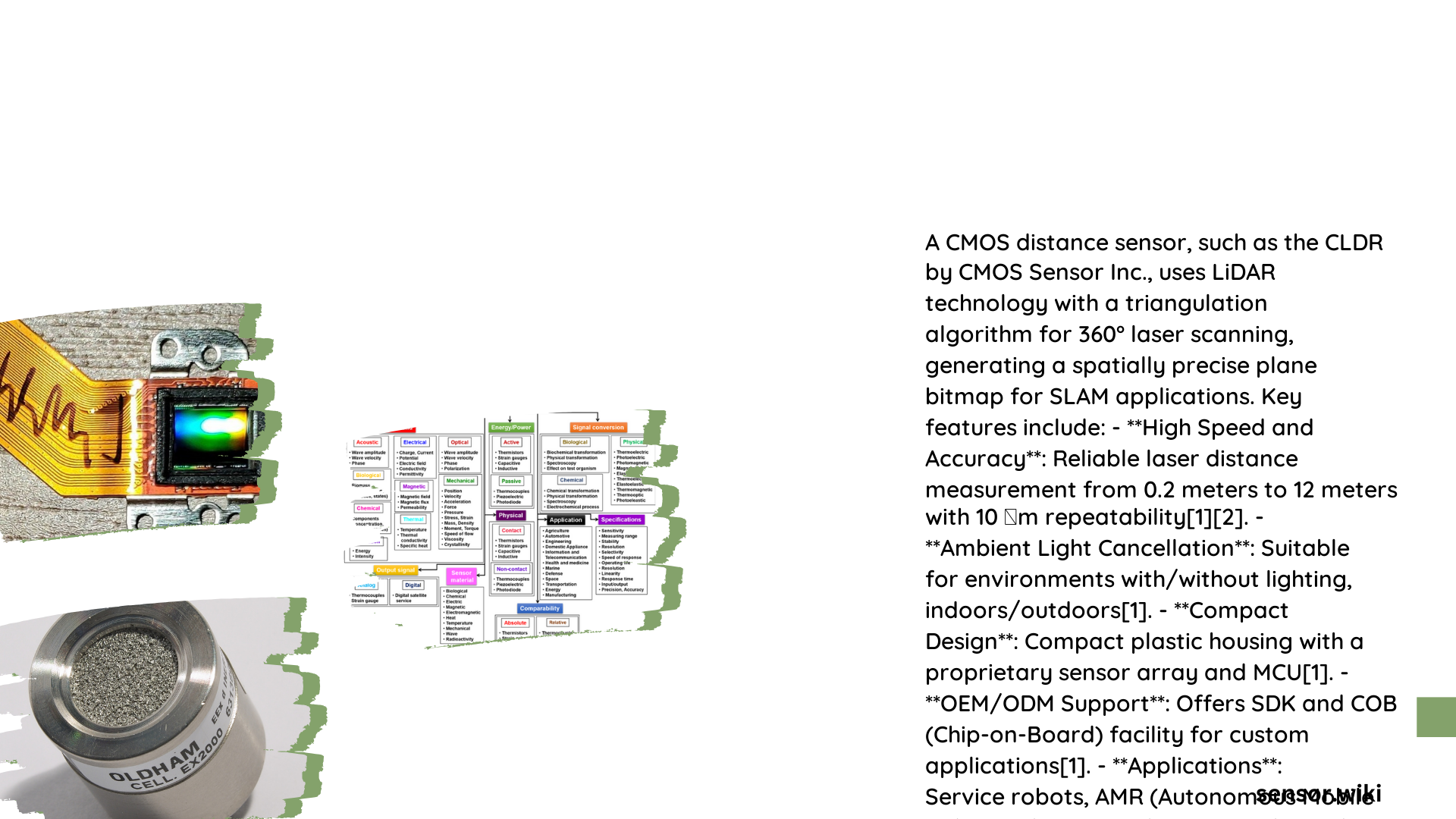CMOS distance sensors represent cutting-edge technological solutions for precise spatial measurements, utilizing advanced semiconductor technologies to capture accurate distance data across diverse environments. These compact, energy-efficient sensors leverage complementary metal-oxide-semiconductor (CMOS) technology to provide high-resolution distance measurements with remarkable precision, making them critical components in modern automation, robotics, and sensing applications.
What Are CMOS Distance Sensors?
CMOS distance sensors are sophisticated electronic devices designed to measure distances between objects using advanced optical and electronic principles. These sensors convert optical signals into electrical signals, enabling precise spatial measurements across various industrial and technological domains.
Key Characteristics of CMOS Distance Sensors
| Characteristic | Typical Range |
|---|---|
| Operating Voltage | 2.7 – 30V DC |
| Power Consumption | 10 – 50 mA |
| Detection Range | 0.2 – 12 meters |
| Output Interfaces | Analog, I2C, Digital |
How Do CMOS Distance Sensors Work?

CMOS distance sensors operate through several sophisticated mechanisms:
- Light Emission: Infrared or laser light is projected towards the target object
- Signal Reflection: Light reflects back from the target surface
- Signal Processing: Integrated circuits calculate distance based on reflection time
- Output Generation: Precise distance measurement is converted into electrical signals
What Are the Primary Applications?
Industrial Automation
- Robotic positioning
- Quality control measurements
- Object detection and tracking
Robotics
- Obstacle avoidance
- Navigation systems
- Autonomous vehicle guidance
Security Systems
- Perimeter monitoring
- Motion detection
- Access control mechanisms
Which Manufacturers Produce Top CMOS Distance Sensors?
Sharp GP2Y0E Series
- Voltage Range: 2.7 – 5.5V
- Detection Distance: 4 – 50 cm
- Output Interfaces: Analog and I2C
Panasonic HG-C Series
- Voltage Range: 10 – 30V DC
- Measurement Repeatability: 10 μm
- Output Options: 0-5V analog, 4-20 mA current
Keyence LR-Z Series
- Voltage Range: 10 – 30V DC
- Resolution: 1 – 5 mm
- Mounting Options: Threaded and rectangular mounts
What Factors Impact CMOS Distance Sensor Performance?
Several critical factors influence sensor accuracy and reliability:
- Surface Reflectivity: Different materials reflect light differently
- Ambient Light Conditions: Potential interference sources
- Temperature Variations: Operational environment stability
- Sensor Calibration: Regular maintenance requirements
What Are the Technological Challenges?
- Minimizing signal interference
- Maintaining high precision across varied environments
- Reducing power consumption
- Enhancing signal-to-noise ratio
Future Technological Developments
Emerging trends in CMOS distance sensor technology include:
– Enhanced machine learning integration
– Improved ambient light compensation
– Miniaturization of sensor components
– Multi-spectral sensing capabilities
Conclusion
CMOS distance sensors continue to revolutionize spatial measurement technologies, offering unprecedented precision and versatility across multiple domains. As semiconductor technologies advance, these sensors will become increasingly sophisticated, enabling more complex and intelligent sensing solutions.
References:
1. Sharp GP2Y0E Series Datasheet
2. Panasonic HG-C Series Technical Documentation
3. Keyence LR-Z Series Specifications
